During Spanish and Mexican rule, the Catholic Franciscan Misión de San Gabriel Arcángel (1771) was the sole religious institution in the region. After statehood, however, the overwhelming majority of area settlers were members of Protestant denominations, and the first of those to form congregations in what was then called the Upper Azusa Valley were the Methodists in 1872, followed by the Baptists in 1873.1
The German Baptists in particular played a significant role in the early history of Covina. In 1883, they proposed to purchase the entire Phillips Tract in the Lower Azusa Valley for the purpose of establishing a religious colony. Even though the deal eventually fell through, a fair number of Brethren remained in the area, and in 1886,1 they began construction of the first dedicated church building in the new townsite of Covina.
The local Methodist and Episcopal congregations soon followed suit with their own pioneer churches; in 1888 and 1891 respectively.1
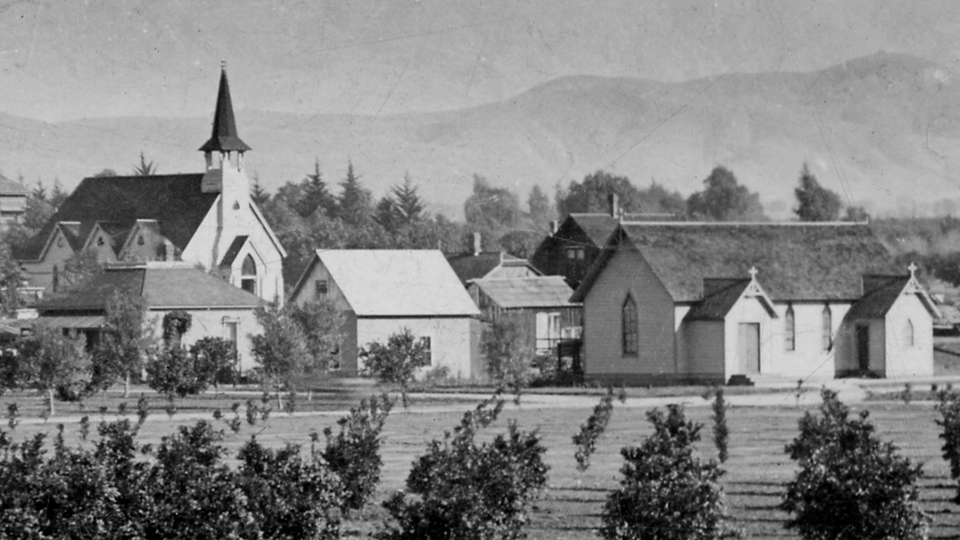
The early Methodist and Episcopal Churches in Covina, 1894. Source: California State Library.
In the first June of the Twentieth Century, the original Brethren church burned down, and a new, larger building was constructed in its place.2
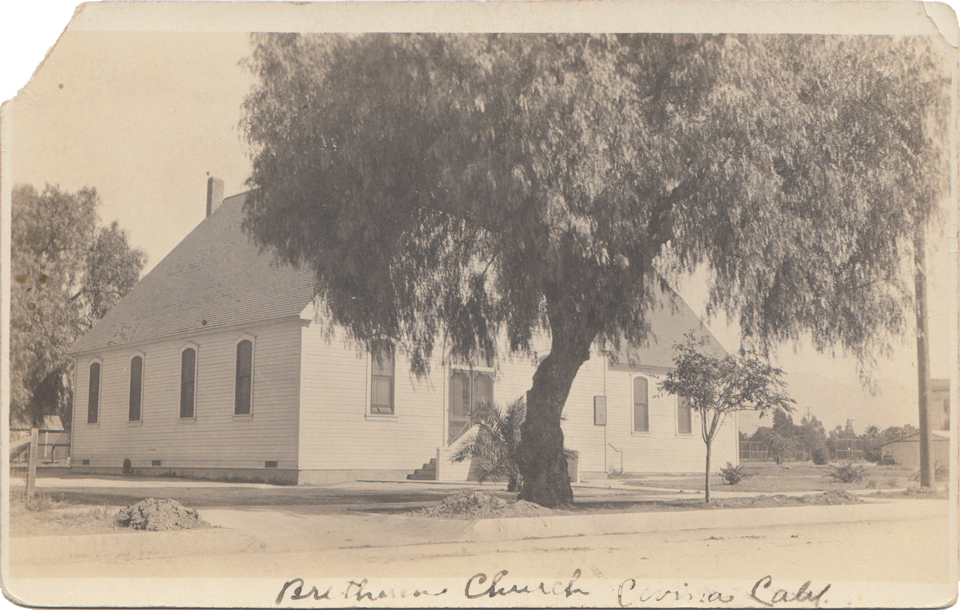
The second Church of the Brethren (dedicated 1901), northwest corner of Puente and Third Streets.
In 1894, members of the Christian Church organized and opened their own house of worship the following year.2 Within a decade, they outgrew their original home and subsequently erected a new building designed in the Mission style and constructed entirely of concrete.
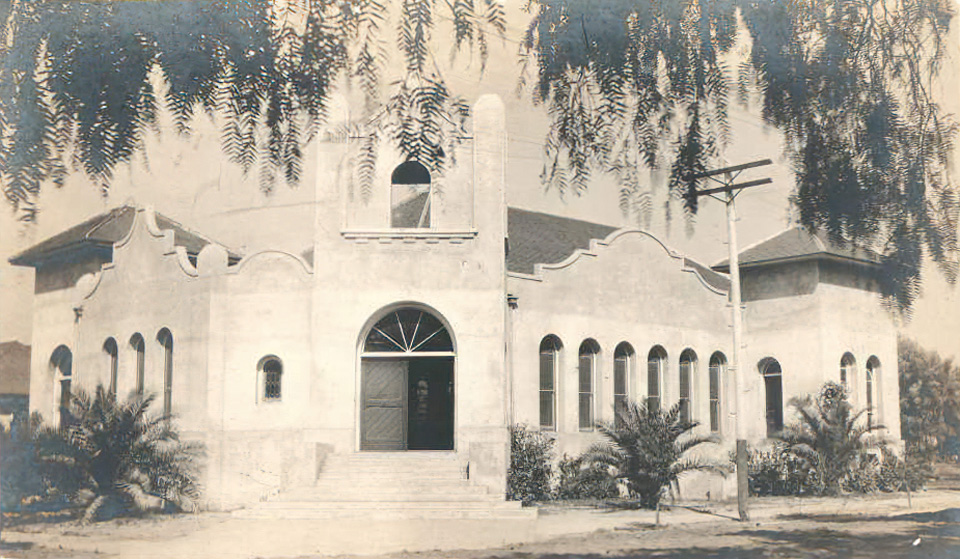
Covina Christian Church (dedicated 1904),3 northeast corner of San Bernardino Road and Park Street.
The Baptists formed their first local church in Azusa, but in 1897,1,4 faithful in the Covina area organized their own congregation, and, the following year, built a church on Second Street north of College.4 Nine years later, the Baptist sanctuary best known to early Covinans was dedicated on the same site.
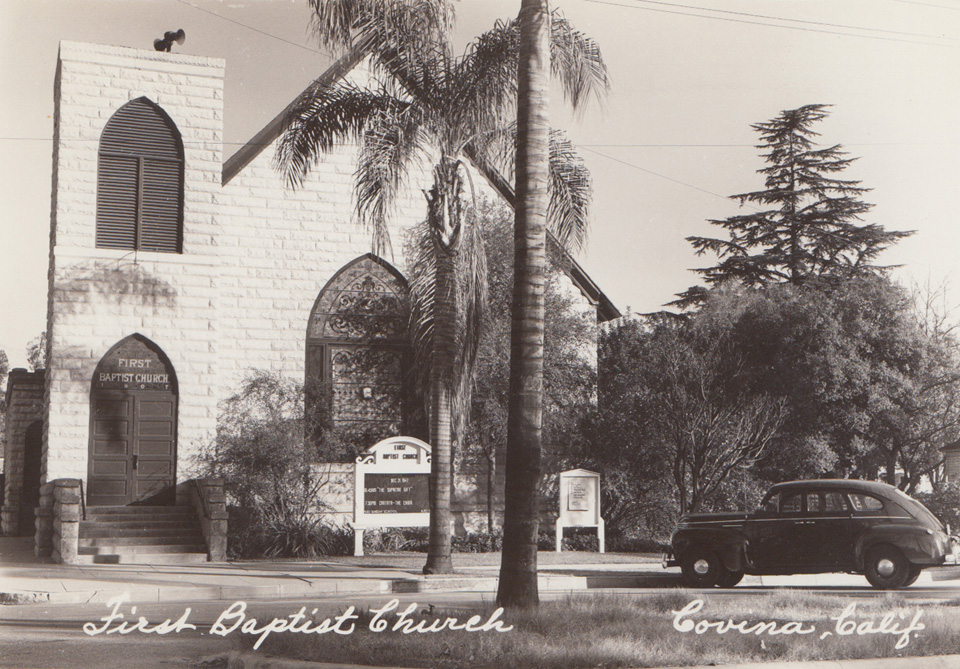
First Baptist Church (1907), 230 North Second Street.
The Covina Presbyterians organized in 1905, and subsequently built what at that time was agreed to be the grandest and most ornate church in the entire valley.1
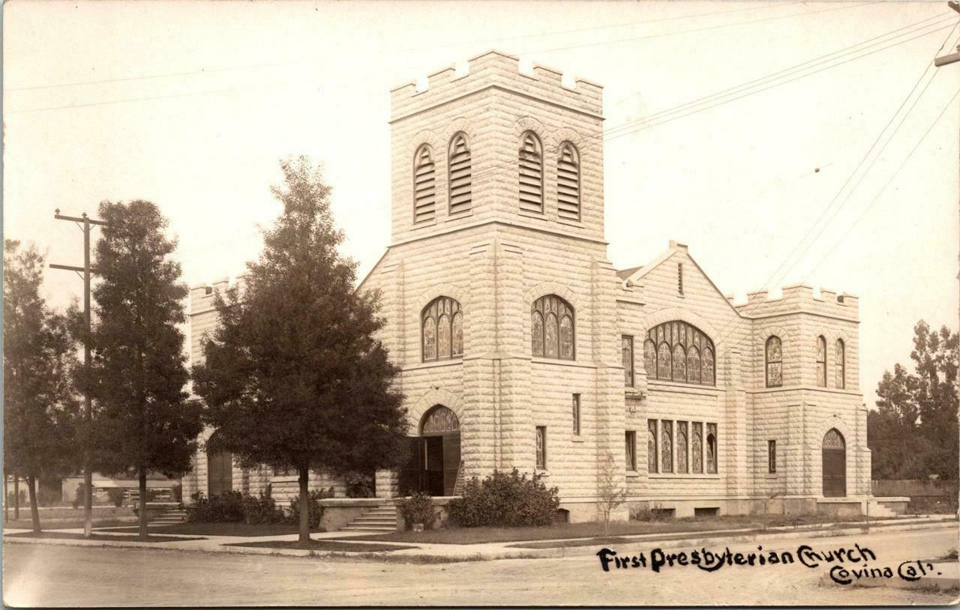
First Presbyterian Church (1908), northeast corner of Second and Italia Streets.
The Methodists, meanwhile, also feeling the need for a larger building, laid the cornerstone for their new M.E. church in 1907. Delays brought about by financial conditions of the time,5 however, put off its completion and dedication for another three years.
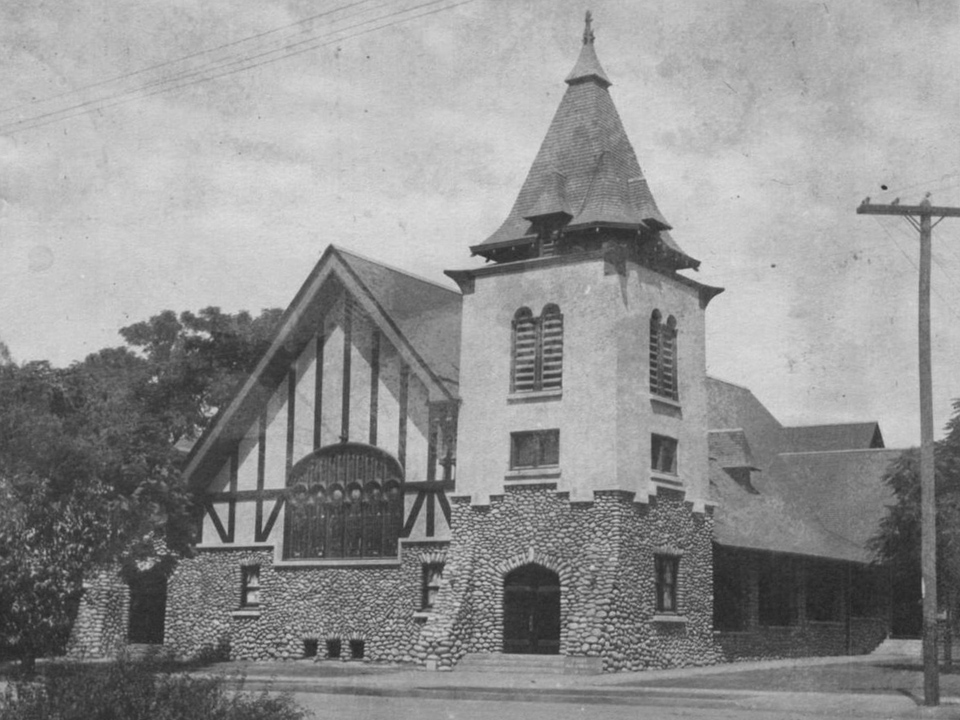
First Methodist Church (1910), 125 West College Street.
The first Episcopal church in Covina was destroyed by the great December windstorm of 1891, only weeks after it was built.1 A second mission was completed in October, 1892,6 but as with every other congregation in town, the need was soon felt for much larger quarters. The stately granite and wood Holy Trinity Church so familiar to subsequent generations of Covinans was dedicated March 26, 1911,7 and is the only early Covina house of worship that remains the active home of its congregation to this day.
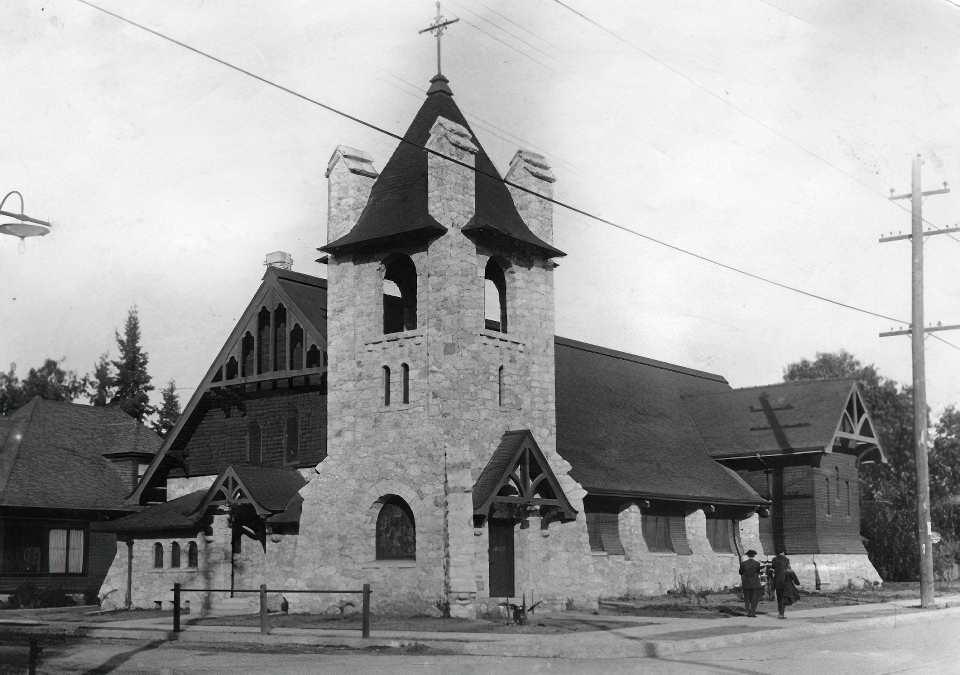
Holy Trinity Episcopal Church (1911), northeast corner of Badillo and Third Streets. Source: Los Angeles Public Library.
Catholics in Covina formed their own local parish in 1909,1 and celebrated the first Mass in their new church during the Easter season of 1912.8
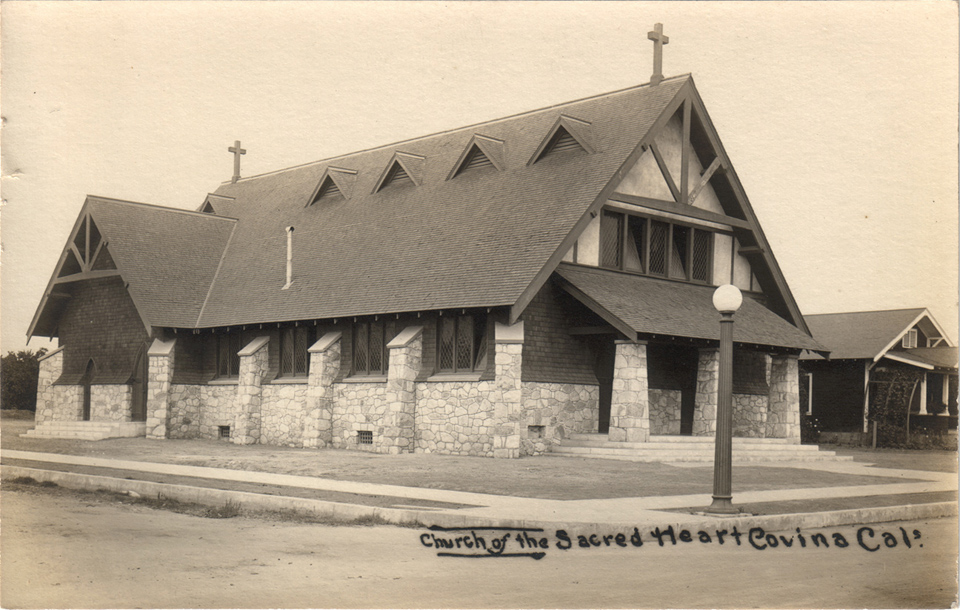
Sacred Heart Catholic Church (1912), northeast corner of Center and Fifth Streets.
The last major Protestant denomination to organize was the Lutherans, in 1911.1 The church they built in 1913 along with Holy Trinity and the former Catholic chapel are the only pre-World War I houses of worship that still stand in Covina today.9
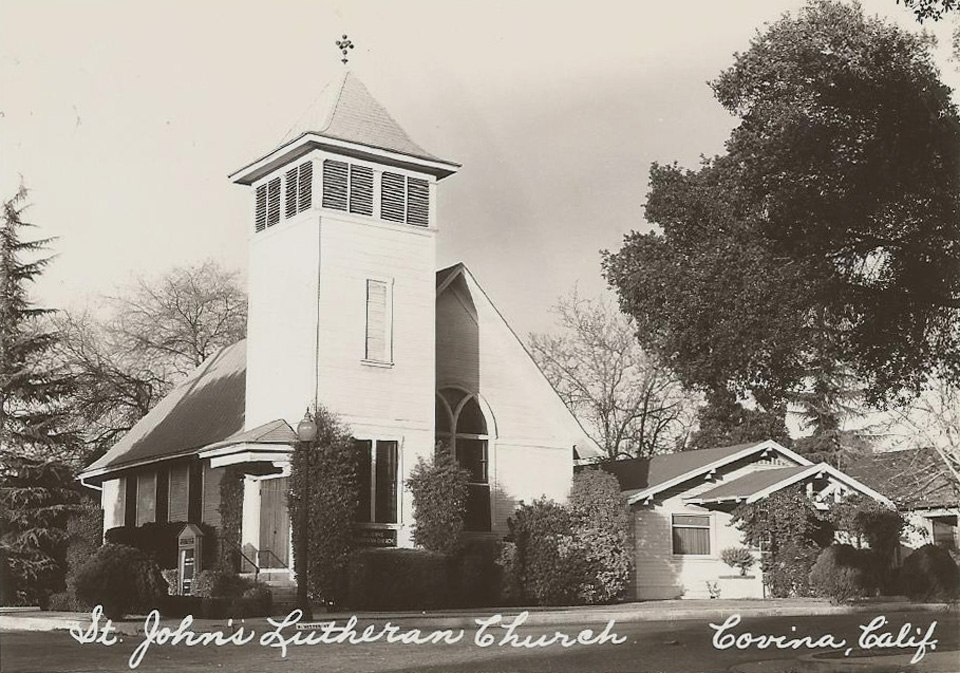
St. John's German Evangelical Lutheran Church (1913), northeast corner of Dexter and Third Streets.

References:
1 Pflueger, D. H. 1964. Covina: Sunflowers, Citrus, Subdivisions. Castle Press, Pasadena, California, 372pp.
2 Covina Argus, November 16, 1901, p.1.
3 Covina Argus, September 17, 1904, p.1.
4 Covina Citizen, June 4, 1931, p.3.
5 Covina Argus, November 13, 1909, p.1.
6 Los Angeles Herald, October 10, 1892, p.6.
7 Covina Argus, April 1, 1911, p.2.
8 Covina Argus, March 9, 1912, p.4.
9 The Citrus Peal, Covina Valley Historical Society, April, 2014, p.5.
No comments:
Post a Comment
To post a comment, you must login to this page with the Google Chrome web browser. That is the only way that works now.